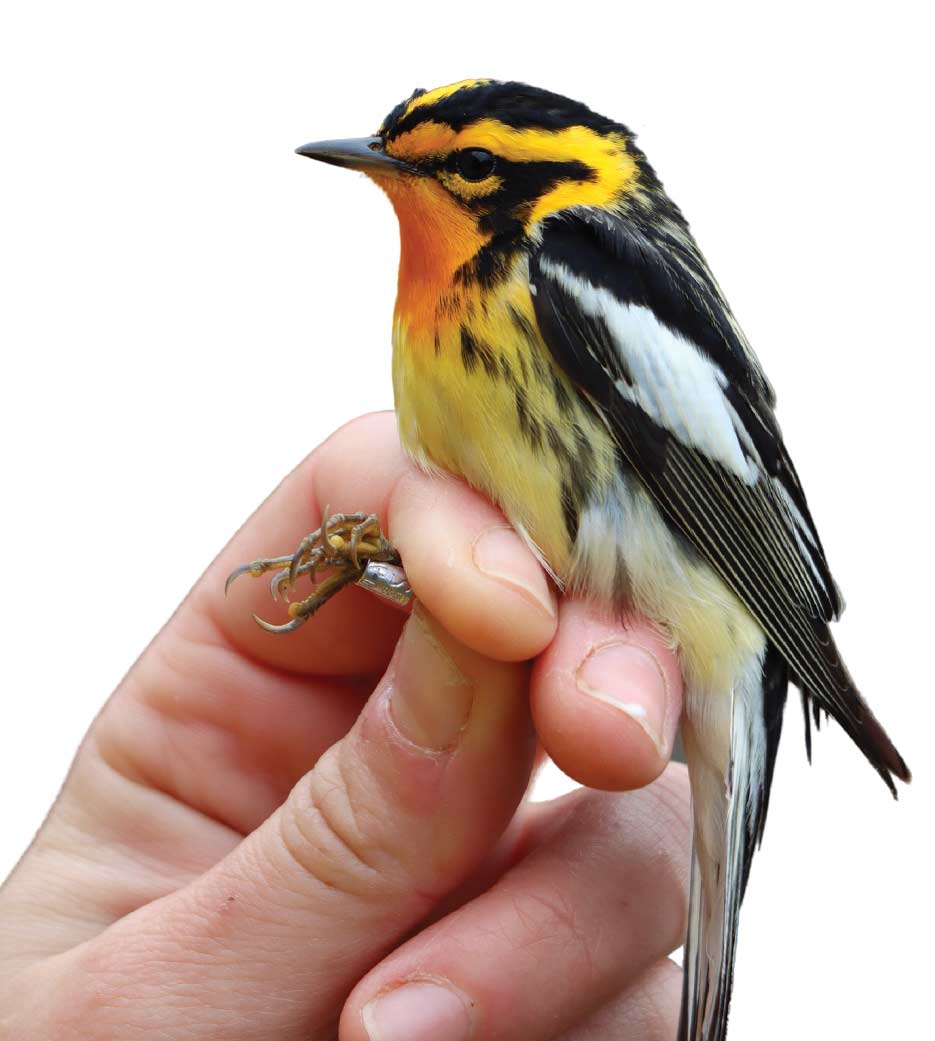
Banding a Blackburnian warbler
Tucked away on a sliver of land on the south shore of Prince Edward County lies a research station that not only supplies valuable information on the local ecosystem, but networks its data across North America and beyond.
Established in 1995, the Prince Edward Point Bird Observatory (PEPtBO) is situated on 560 hectares in the Prince Edward Point National Wildlife Area, near the tip of Long Point. The land, which is federally owned and managed by the Canadian Wildlife Service, is the ideal location for the observatory because it is a staging area for migrating birds making their way across Lake Ontario.
Philip Mercier is the observatory’s full-time manager. He explains that PEPtBO is one of many facilities across Canada that supply bird banding data to the Canadian Migration Monitoring Network (CMMN). The CMMN data is a valuable tool for monitoring bird populations, rates of survival, ecosystem health and information related to endangered species; it also assists in setting regulations for hunted species.
PEPtBO focuses its banding efforts on migrating songbirds, raptors and owls, which are captured in “mist nets” made of soft transparent polyester. Each net measures 3 metres by 12 metres. The mesh size is 30 mm for songbirds and 60 mm for raptors and owls. Mercier explains that he and his team set 24 nets each morning before sunrise, which are hung on poles strategically placed between trees and bushes. Imagine gossamer pockets into which the birds fly and become entangled.
Trained volunteers then gently remove the birds and put them into cloth bags and carry them back to the station to be banded. Mercier, assisted by one of his team members, wraps a small aluminum identification band – which is sized and weighted in proportion to the bird – around its leg. Wrapping these tiny bands around a leg requires the dexterity of a surgeon and gentle teamwork. The band number is recorded and verified, and then the bander ages the bird, weighs it, and measures the wing chord (the anatomical measurement of the bird’s wing). Often in a day’s work, the banding team will measure an owl’s wing as long as your arm or a bluebird’s wing as short as your baby finger and everything in between.
Banding during spring migration runs from April 10 to May 31, and in the fall from August 15 to October 31. Mercier says they try to band every day but are at the mercy of the elements. “Days off are dictated by weather, which usually adds up to one day off per week if we are lucky. The dynamics of bird banding make every day interesting.” However, his enthusiasm, professionalism and love of the job do not end with migration banding.
Additional work undertaken by Mercier and his team during the summer months gives insight into resident species. The data they collect is forwarded to the Monitoring Avian Productivity and Survivorship (MAPS) bird banding program, which works in partnership with the Institute of Bird Populations (IBP) in California. Mercier gathers information from specific locations in four conservation areas in Prince Edward County, setting up his nets every ten days throughout the summer and monitoring local populations and survival rates of various species.
Across Canada and the United States, an average of 1.2 million birds are banded every year, with 340,000 of them flying into facilities like PEPtBO. Last year, 13,867 birds covering 99 different species were banded at the observatory. Through Birds Canada and its affiliation with other bird conservation networks and the Avian Knowledge Network, data from banded birds captured in Watershed country is available worldwide. The data and monitoring of our feathered friends serve every aspect of environmental concerns and studies, from climate change to development projects.
Story by:
Roger Thomas
Photography by:
Jessica Daze




